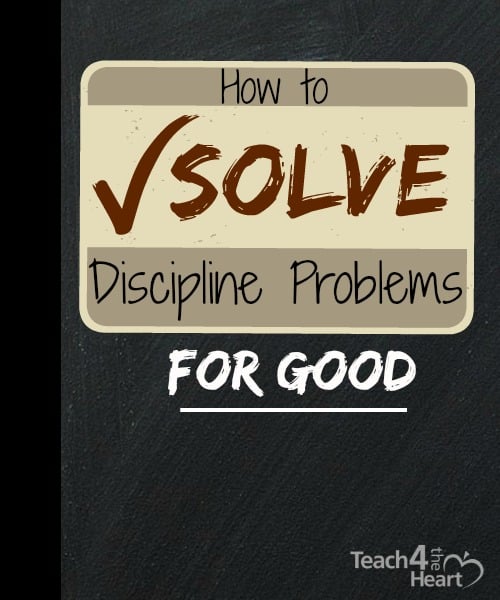When it comes to dealing with discipline problems, we teachers have a few different choices…
- We can ignore it.
- We can yell at the student.
- We can give an eloquent lecture.
- We can calmly tell the student to correct their behavior.
- We can assign a consequence and move on.
But while some of these options are clearly better than others, none of them are the most effective way to deal with ongoing discipline problems. And that’s because all of these are just surface solutions. They don’t get to the root of the problem.
If We Really Want to Solve the Problem…
If we want to make a lasting change, if we want to make a real difference in the student’s life, then we must take the time to find out what’s really causing the issue.
Is Camden cheating because he’s afraid of failure? Is Priscilla being the class clown because she thinks that’s how she’ll make friends? Does Elias not do his homework because he’s too busy playing video games?
When we can figure out the real issue that’s causing the behavior, we can really attack the problem at its core. And when we help the student overcome the underlying problem, then we’ll start to see real progress and real improvement.
The biggest challenge, though, is figuring out what the underlying problem is. It’s not always obvious, and it sometimes takes a bit of work to discover it.
How to Find the Underlying Cause of Discipline Issues
- Take time to talk to the student. Yes, I know you are busy. But the time you invest in figuring out the root issue will pay off when you start seeing improvement in your student’s behavior. So take time to talk to them – and not just about the problems they’re having. Get to know them, show them you care, and start to develop a rapport with them.
- Ask questions and wait for answers. When it does come time to talk to them about their behavior, ask questions and then just wait for answers. In other words, if they’re just standing there staring at the floor, don’t fill the space with a lecture. Instead, just sit quietly and wait for a response. If needed, ask a follow-up question, but the key is to get them to start talking because you’re never going to figure out the underlying issue if you’re the one doing all the talking.
- Pay attention to body language. If a student won’t talk, try suggesting some possibilities and watching their body language. Make the conversation less threatening by talking about “other students.” For example, you might say, “Some students I know don’t even want to attempt the math problems because they’re scared they’re going to get them wrong.” Pay attention to both their verbal and nonverbal responses.
- Talk to the parents. Share with the parents how you are trying to discover the underlying problem that’s causing their child’s inappropriate behavior, and ask them what they’re observing at home. Listen carefully to their responses. And keep them involved throughout the process.
- Seek first to understand. During these conversations, seek first to understand then to be understood. That means that you are actively listening and trying to see the situation from the student’s or parent’s point of view before you try to explain your own point of view. (I write more about Seeking First to Understand here.)
- Coordinate with other faculty or staff members who may have additional insight. If you’re really stumped, try coordinating with other teachers that have taught the student or any administrative personnel who may be working with him or her. They may have already gained some insight that may be helpful to you.
Once you’ve figured out the underlying problem(s), then you can work together with the student and parents to address the true problem instead of just the surface issue.
We dive deeper into not only how to get to the bottom of these chronic issues but also how to solve them in our new course Beyond Classroom Management. It's all about using relationship-based strategies to inspire respect, engagement, and responsibility.


